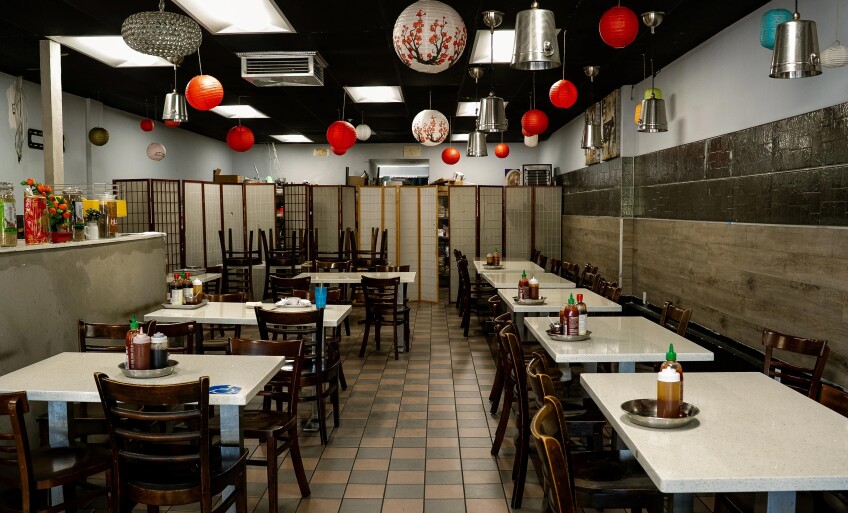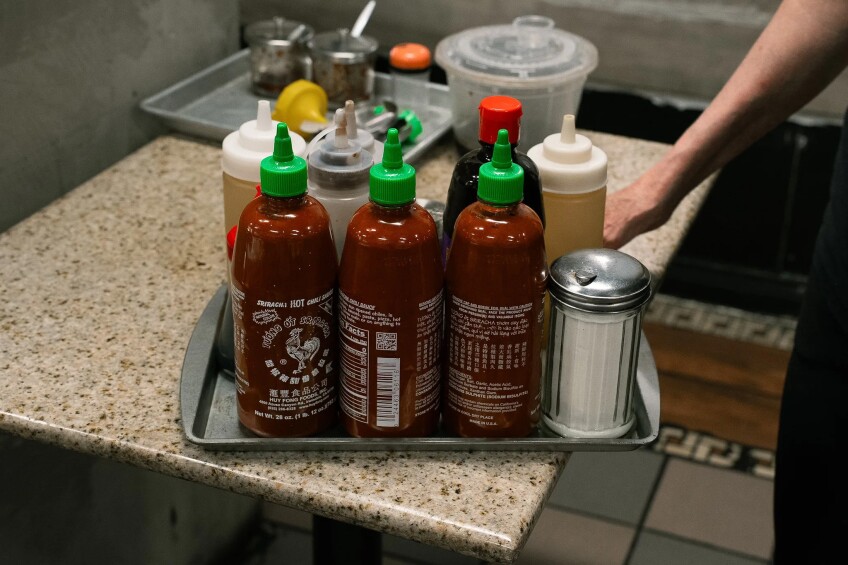ICE Enforcement Affects Vietnamese, Cambodian Communities in SoCal

This article was first published by the nonprofit newsroom LA Public Press on July 9, 2025 and is republished here with permission.
John was born in a refugee camp in Thailand in the summer of 1973 after his family fled the civil war in Cambodia. Five years later, they resettled in California, where his parents worked alongside migrant farmworkers picking produce in the fields of the Central Valley.
John said his parents, accustomed to country life, struggled to raise their children in cities like San Diego and Modesto. “They didn’t know how to raise us,” he added.
John, identified by his middle name because of his immigration status, grew up in poverty and started stealing money at a young age and later joined a Cambodian gang.
“We were being picked on by Americans,” said John. “We felt we had to bear it together.” At 21, an argument turned deadly when John shot and killed a 17-year-old.
John served 27 years in prison and was released on parole in 2021. In the past four years, he’s reformed his life, speaking openly about his past to deter other young men from gang culture. Still, he continues to pay for the murder he committed three decades ago.
As a non-citizen permanent resident, John’s status was revoked when he was found guilty of second-degree murder.
“They’re trying to deport me to a country that I’ve never been to,” said the 52-year-old. The Cambodian consulate wasn’t able to draw up the travel documents to receive him, he said, and his immigration status is in limbo. John is now undocumented and under order of supervision, a deferred deportation where Immigration and Customs Enforcement surveils him with conditional release.
As ICE crackdowns have heated up across Southern California, John knows of at least three formerly incarcerated Southeast Asians in his community taken after immigration office check-ins. LA Public Press was unable to independently verify these specific detentions; John provided one name, but that individual could not be found on the ICE detainee locator. With his annual compliance check-in due later this year, he fears he could be next.
“It’s double jeopardy to incarcerate us for two [or] three decades and to come out here to be punished for the same crime again,” John said.
John’s case reflects a broader pattern affecting over 200,000 Asian immigrants living in Southern California without legal status. Immigration advocates say ICE is increasingly targeting long-term residents from Cambodia, Vietnam, and Laos — many of them decades-old refugees — for deportation based on old criminal convictions. The crackdown has sent shockwaves through Asian American communities, shuttering businesses.
The Department of Homeland Security denied that ICE targets specific ethnic communities. “What makes someone a target of ICE is if they are illegally in the U.S.—NOT their skin color, race, or ethnicity,” a DHS spokesperson said in a statement. The agency said 70% of ICE arrests involve people “who have been convicted or have pending charges.
The targeting represents an escalation from earlier enforcement. In May, advocates reported at least 17 Southeast Asian immigrants detained at routine ICE check-ins in LA and Orange counties. June’s ICE raids brought a chilling effect to Chinatown and Little Saigon as law enforcement presence increased in Asian neighborhoods.
Advocates say ICE is targeting Southeast Asian people who have criminal records
Activists and organizers in Southeast Asian communities note that ICE deportations largely stem from past criminal convictions, unlike the more public raids at sites like Home Depot. Around 80% of Southeast Asian deportees have committed crimes considered grounds for removal, ranging from murder and rape to lesser offenses like DUI and theft.
An analysis of federal data by SEARAC, a civil rights organization advocating on behalf of Cambodian, Vietnamese, and Laotian communities, showed that nationally Southeast Asians are 3 to 5 times more likely to be deported based on a prior criminal conviction than other immigrant communities. In Southern California, this disparity affects hundreds of families across LA and Orange counties, home to some of the largest Southeast Asian populations in the country.
ICE did not respond to LA Public Press’ request for comment.
“We are easily trackable,” said Chhaya Chhoum, the executive director of the Southeast Asian Freedom Network. Immigrants with criminal records like John are caught in a no-win situation. Checking in with immigration is a gamble if ICE is waiting to pick you up, but becoming a fugitive means breaking the law.
Chhoum, who started as a youth activist in the Bronx, has led her national abolitionist organization in fighting deportations for over 20 years. She draws a direct correlation between the wars the U.S. in Southeast Asia 50 years ago—the genocide in Cambodia, the Vietnam War, and carpet bombing in Laos—and today’s prison-to-deportation pipeline sin Asian American communities.
A 2003 study published in the Journal of Ethnicity in Criminal Justice, using 1991-1996 California Department of Justice data, found Southeast Asian refugee populations overrepresented in every arrest category. Specifically, Cambodians, Laotians and Vietnamese had significantly higher odds of arrest for crimes like theft, car theft and petty theft, which tend to produce financial gain.
“We were all inserted into urban poverty,… highly policed communities…[that] was how we entered the United States, living in and with people who were already disinvested in,” Chhoum said of Southeast Asian refugees who arrived with little resources in the United States.
Like many Southeast Asian refugees, John’s family’s trauma from war and displacement in their home country was compounded by poverty and marginalization in the U.S. — factors that advocates say created the conditions for higher rates of involvement in the criminal justice system.
Asian businesses report major revenue loss
Organizing groups have vigilantly monitored Asian neighborhoods for ICE activity. In Chinatown, an early June ICE operation site, the volunteer group Chinatown Community for Equitable Development has raised funds for support local vendors impacted by slumping foot traffic.
“We’ve raised $14,000 [that] we’ve distributed already to 11 families,” said Charlotte Nguyen, a volunteer who does local outreach with CCED’s small business committee. The money has helped at-risk street vendors stay home to avoid potential run-ins with ICE and assisted other businesses in recouping their losses.
On a weekday afternoon, two weeks after the violent clash between law enforcement and protestors at the “No Kings” protest, the streets of Chinatown were still eerily quiet.
Regina Ly, a server at Chinatown’s Gigo’s Cafe & Deli, said traffic dropped 70%, cutting her work days from six to three as owners struggle to pay staff. Her paycheck has been halved since the ICE raids and Downtown LA protests.
“[We] don’t go out a lot…[we] don’t spend the money and save for the future,” Ly said. While she isn’t afraid for her own legal status, she’s been staying at home to save money. “We don’t make enough money.”

Indigo Vũ, the operations and programs manager at Orange County social justice organization VietRISE, noted volunteers passing out “know your rights” fliers in Orange County’s Little Saigon have remarked that “plazas seem much emptier than usual.” This area is particularly significant as, according to the LA Times, Orange County is home to the world’s largest community of Vietnamese people outside of Vietnam.
Language access has been a barrier to spreading resources, said Vũ. Organizations like the Orange County Rapid Response Network have been collaborating with the Viet Rainbow of Orange County for local businesses outreach.
For Southern California’s Southeast Asian communities, deportation fears extend beyond individuals. Business owners and community members say the enforcement actions are economically impacting entire neighborhoods.
“Good immigrant” vs “bad immigrant” divides communities
Los Angeles County has one of the nation’s largest undocumented Asian American populations. Asian immigrants constitute 16% of people living in Los Angeles County without legal authorization, making them the second-largest undocumented group, according to the Migration Policy Institute. The LA metropolitan area has the largest population of Cambodian, Indonesian, Filipino, Thai, and Vietnamese people in the U.S., according to the Pew Research Center.
But Chhoum said response efforts that tackle the issue of criminalizing Southeast Asians are stymied by the persistent stereotypes surrounding Asian American communities.
“We’re the myth in the model minority myth,” Chhoum said. A persistent issue in the past was disaggregating the wealth and educational achievement gaps between ethnic groups in studies including Asian Americans. “Our data has not been consistent or broad.”
While college-level attainment is overall 57% for Asian Americans. But that number is lower for Cambodians at 22%, Hmong at 25%, Laotian at 29% and Vietnamese at 34%, according to educational statistics through AAPI data.
Vũ said that narratives of “good immigrant” versus “bad immigrant” have also split the community response in places like Orange County’s Little Saigon.
During Trump’s 2024 campaign for office, he often used phrases like “illegal monster,” “migrant criminals” to depict immigrants living without authorization in the U.S., while also comparing them to animals like “snakes that bite.”
Vũ said that politically, Asian communities have at times been divided on the issue. “We have a number of local elected officials who are Vietnamese who campaign on stories of them being refugees,” Vũ said, then to push the narrative that “if you have a conviction, you deserve to be deported.”
But that idea of exceptionalism, they warned, isn’t going to protect immigrants who see themselves as law-abiding citizens, even as many Asian American immigrants are targeted specifically for past criminal convictions. The CATO Institute found that 93% of ICE detainees between October of last year and this June had never committed a violent offense.
While ICE has largely been targeting Southeast Asians with criminal records, Vũ said, “there’s no reason they won’t stop and they won’t target us next.”
Rep. Judy Chu, who represents the San Gabriel Valley, home to nearly half of Los Angeles County’s Vietnamese population and large overall Asian American communities, criticized the deportations as targeting refugees who “allied with the United States” during the Vietnam War. Previously she had sponsored the Southeast Asian Deportation Relief Act of 2023, to halt the deportations of Hmong, Vietnamese, Cambodian and Laotian immigrations; the bill ultimately failed to pass the judiciary committee.
“These are hardworking and brave men and women with deep roots in their communities who have lived in the United States for decades as lawful permanent residents,” Chu said in a statement. She called the enforcement “yet another example of [Trump’s] cruel anti-immigrant, mass deportation agenda.”

